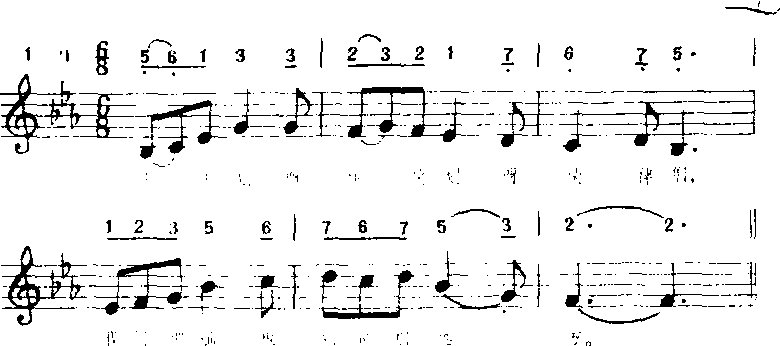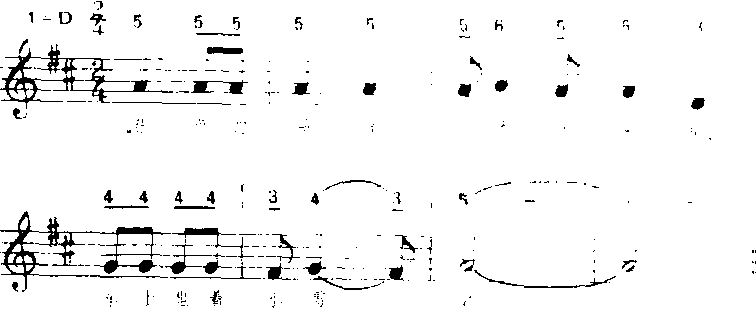节奏与生活的关系Jiezou yu shenghuo deguanxi
生活中一切运动着的事物都有节奏。如:人的呼吸、走路、跑步、驾车、划船、播种、收割、拉纤等和飞禽走兽的飞翔、奔跑、鸣叫等等。这些大自然里的现象和人的喜怒哀乐思等情绪的变化,都给人以一定的节奏感。音乐中的节奏来源于生活,但又区别于生活,它是从生活中概括出来的典型,提炼出来的精华,它比生活中的节奏更有规律性,更有表现力和感染力。如❶《船歌》 (黎英海曲):

这是孩子们划船时的歌声,6/8拍的轻快节奏使我们感受到有力的划船动作和小船摇荡向前划行的情景。
❷《给解放军叔叔洗衣裳》(寄明曲):

表现了捶衣服、搓衣服等动作和劳动欢笑的节奏,生动而形象。
❸《绿色的祖国》 (郑律成曲):

这是从自然界鸟的叫声中提炼出来的。
❹《银色的马车从天上来啦》(蒋雄达曲):

作者从哒哒奔跑的马蹄声和隆隆飞转的车轮声的节奏中,展开了孩子们美丽的想象。
❺《春雨濛濛地下》(吴大明曲):

表达了绵绵春雨纷纷落下的节奏。使我们看到雨丝,听到雨声,也闻到春雨落土的气息。由以上的例证可见,节奏与生活的关系是多么息息相关。这节奏可以用眼看到、用耳听到、也可能是一种感情的波动,在我们心灵的峡谷激起了回声,从而使我们倾听生活、体会生活、感受生活之美。